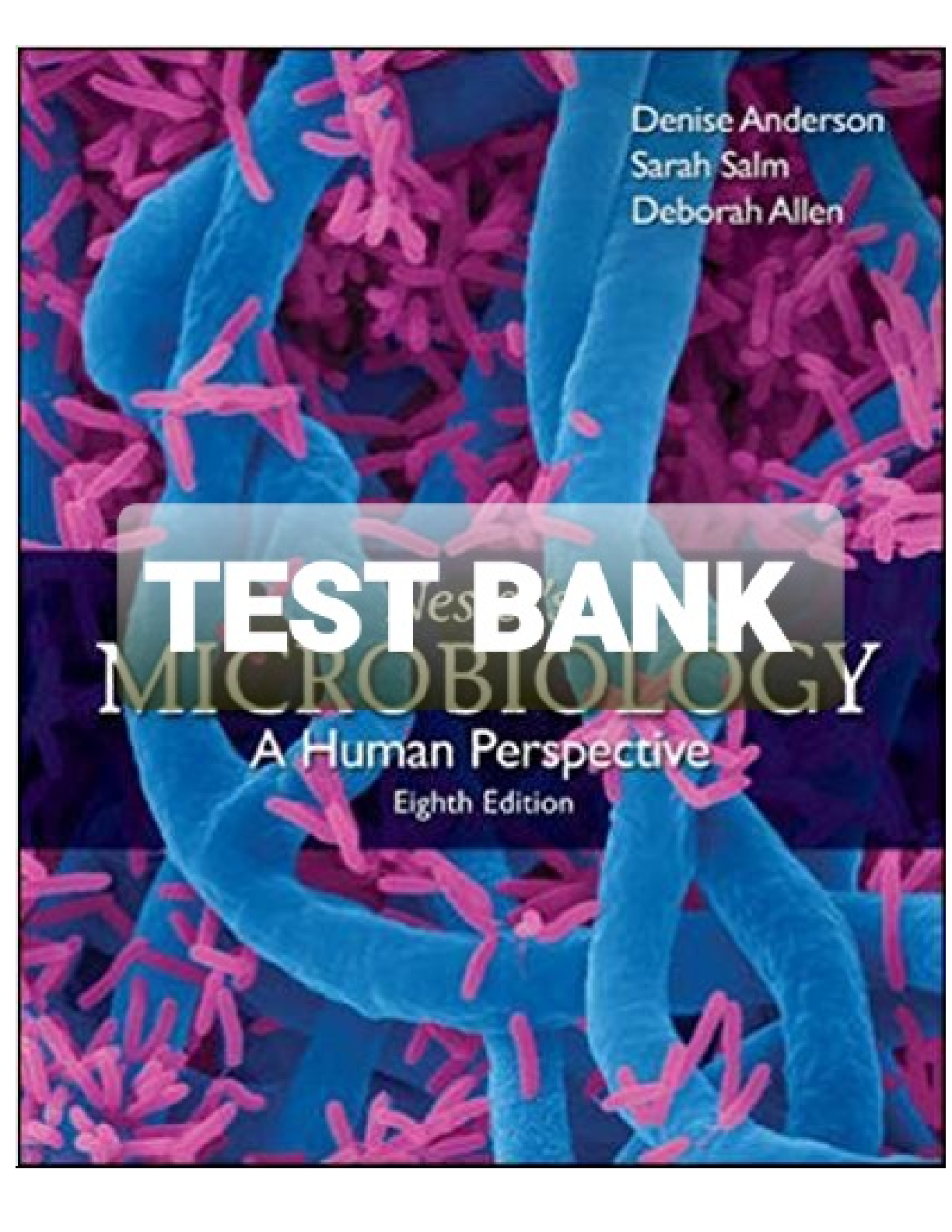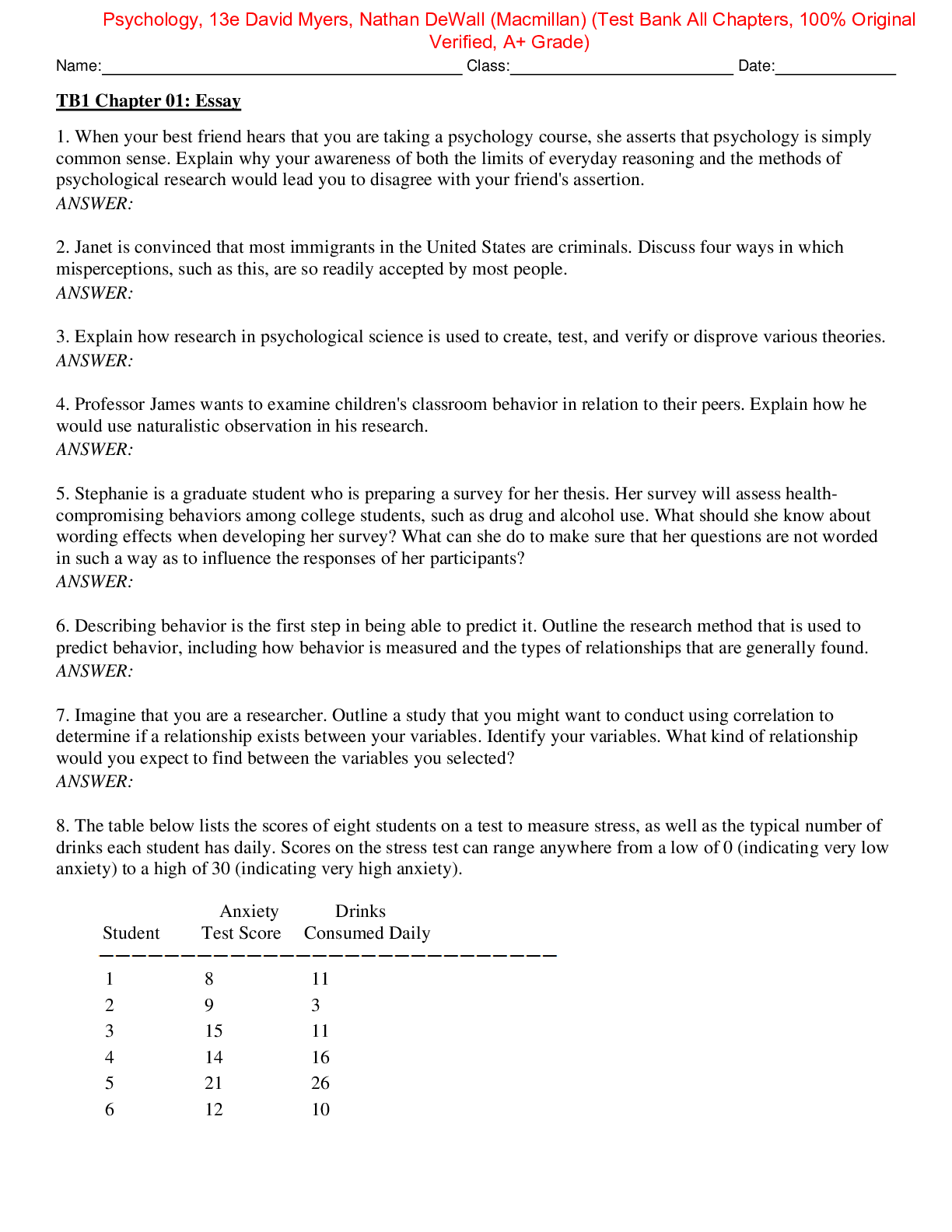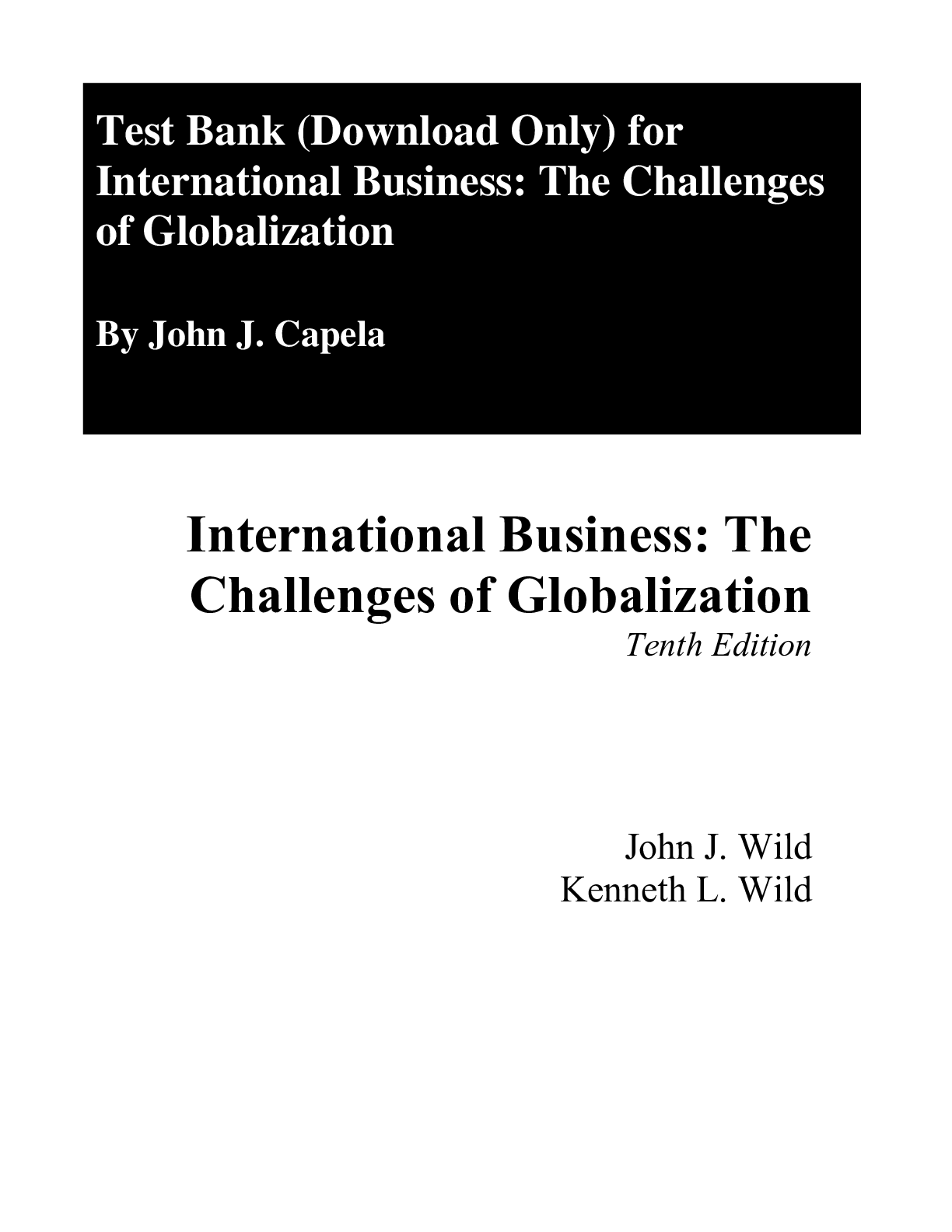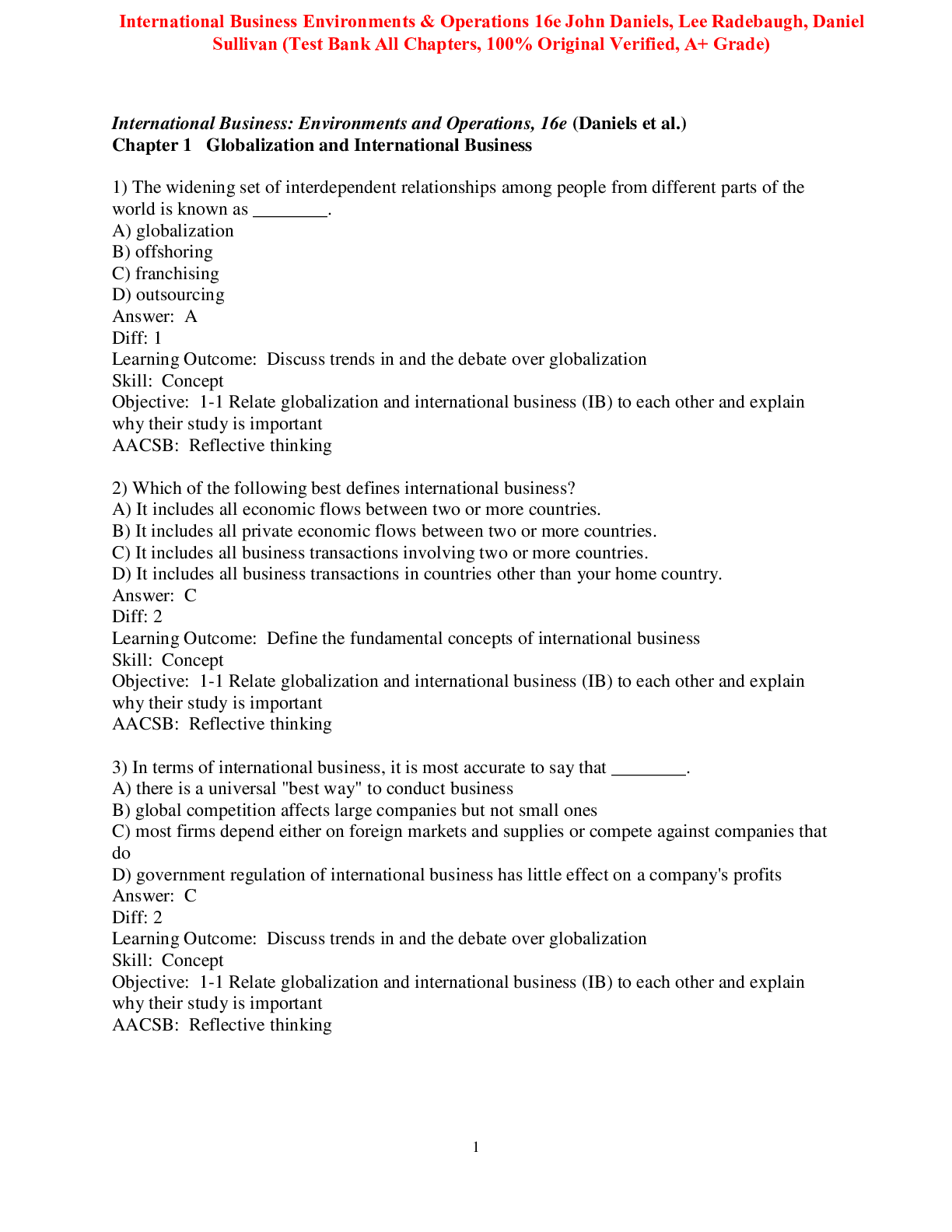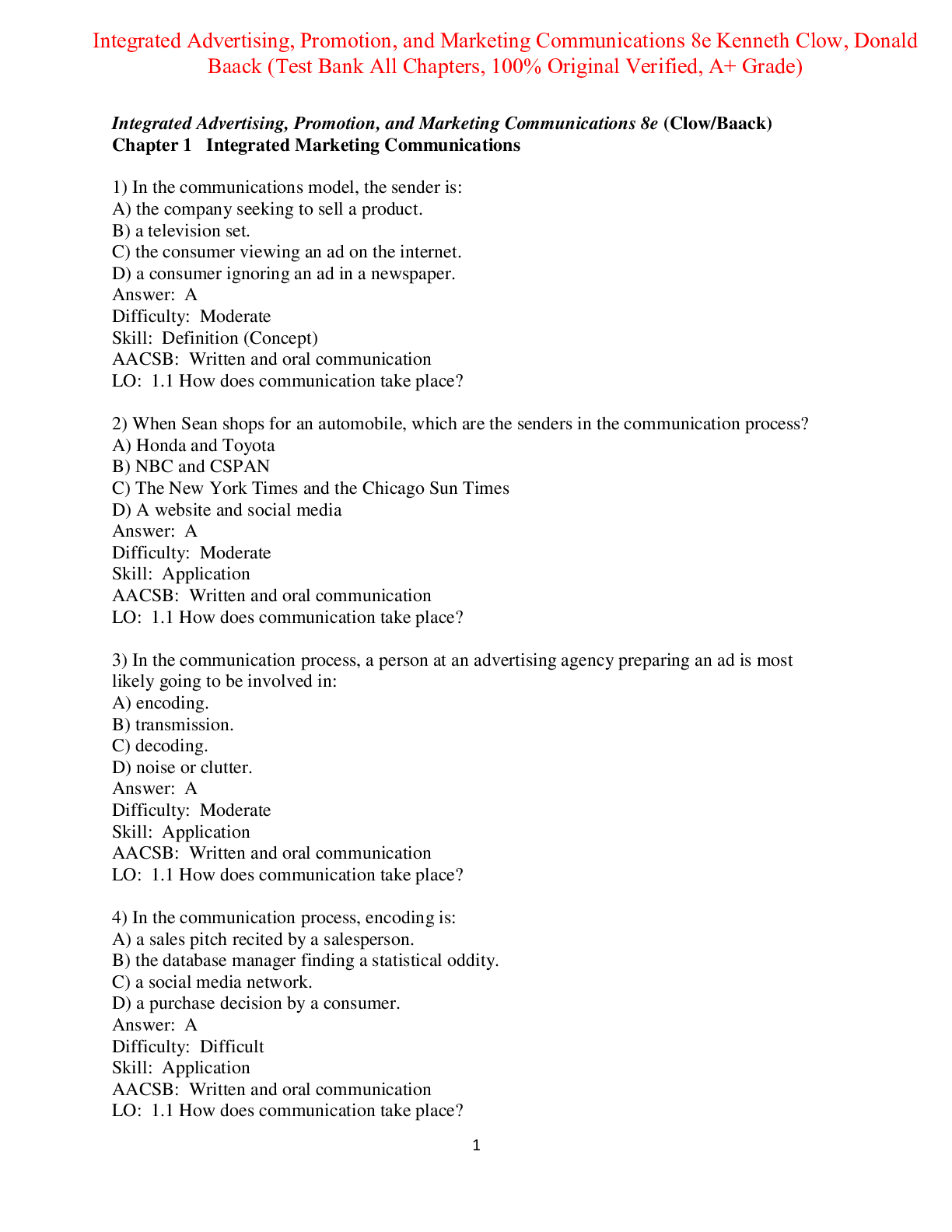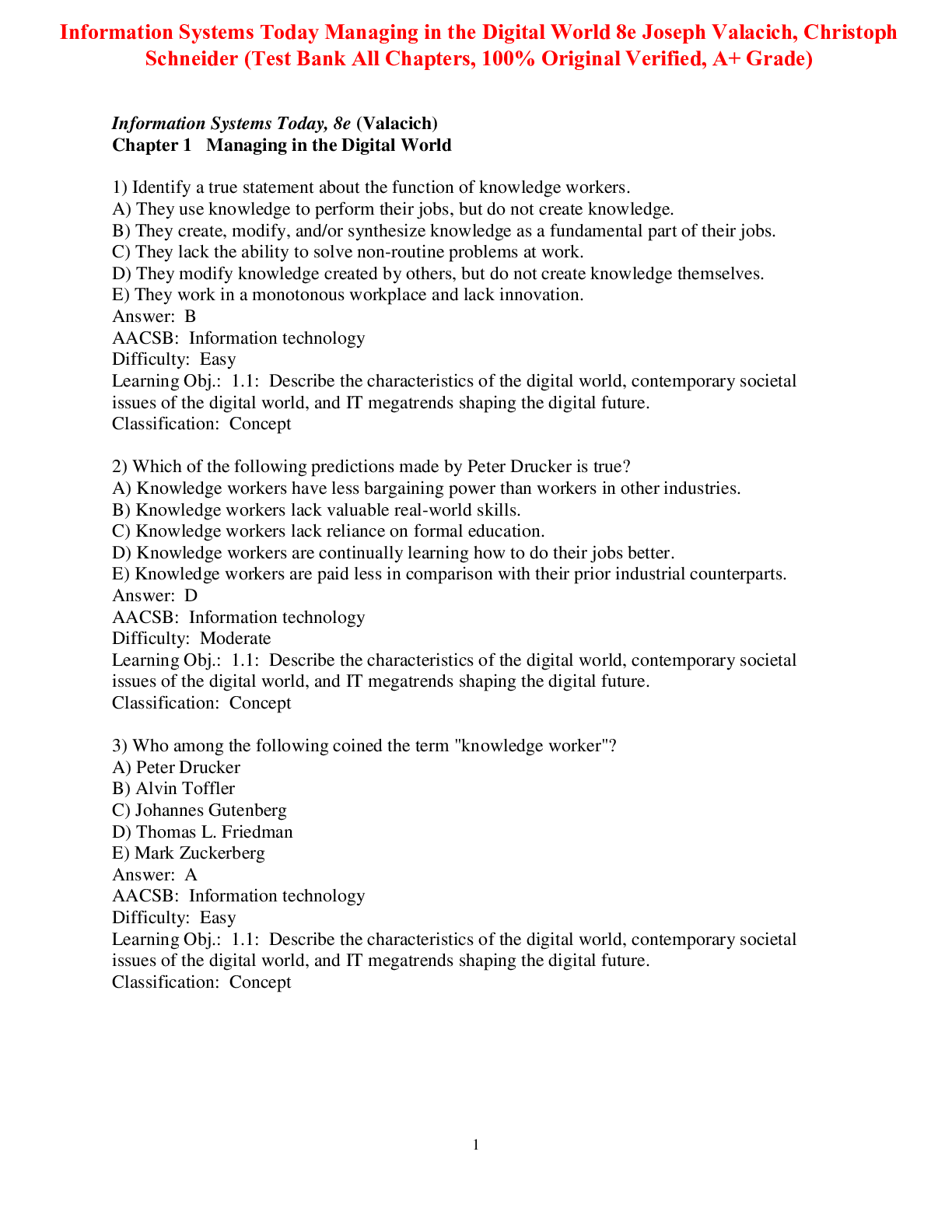Micro Biology > TEST BANK > Denise G. Anderson, Sarah N. Salm, Deborah P. Allen - Nester’s Microbiology_ A Human Perspective-M (All)
Denise G. Anderson, Sarah N. Salm, Deborah P. Allen - Nester’s Microbiology_ A Human Perspective-McGraw-Hill (2015)
Document Content and Description Below
Denise G. Anderson, Sarah N. Salm, Deborah P. Allen - Nester’s Microbiology_ A Human Perspective-McGraw-Hill (2015) Chapter 01 - Humans and the Microbial World 1-1 Chapter 01 Humans and the Mi... crobial World Multiple Choice Questions 1. The scientist usually considered the first to see microorganisms, which he called "animalcules", was A. Redi. B. van Leeuwenhoek. C. Pasteur. D. Tyndall. Bloom's Level: 1. Remember Learning Outcome: 01.01 Section: 01.01 Topic: History of Microbiology Chapter 01 - Humans and the Microbial World 1-2 2. The word "animalcule" was coined by A. Pasteur. B. van Leeuwenhoek. C. Redi. D. Tyndall. Bloom's Level: 1. Remember Learning Outcome: 01.01 Section: 01.01 Topic: History of Microbiology 3. The idea of spontaneous Generation postulated that A. organisms could evolve into the next generation of organisms. B. organisms could spontaneously combust. C. organisms could spontaneously arise from other living organisms. D. living organisms could spontaneously arise from non-living material. Bloom's Level: 2. Understand Learning Outcome: 01.01 Section: 01.01 Topic: History of Microbiology 4. Which of these scientist(s) was/were involved in, among other things, investigating the idea of spontaneous generation? A. Redi B. van Leeuwenhoek C. Pasteur D. Escherich E. Redi AND Pasteur Bloom's Level: 1. Remember Learning Outcome: 01.01 Section: 01.01 Topic: History of Microbiology Chapter 01 - Humans and the Microbial World 1-3 Copyright © 2016 McGraw-Hill Education. All rights reserved. No reproduction or distribution without the prior written consent of McGraw-Hill Education. 5. The work of Tyndall and Cohn A. supported the idea of spontaneous generation. B. was used to explain why others investigating spontaneous generation had obtained results that were opposite of those obtained by Pasteur. C. showed that microbes caused disease. D. allowed scientists to see microorganisms. Bloom's Level: 2. Understand Learning Outcome: 01.01 Section: 01.01 Topic: History of Microbiology 6. The structures present in the hay infusions used in experiments on spontaneous generation that made them difficult to sterilize are A. chlorophyll. B. toxins. C. organelles. D. endospores. Bloom's Level: 1. Remember Learning Outcome: 01.01 Section: 01.01 Topic: History of Microbiology 7. The opposite results obtained by scientists apparently doing the same experiments in investigating spontaneous generation A. shows the importance of repeating experiments. B. shows the importance of exactly duplicating experimental conditions. C. led to further experiments that ultimately furthered knowledge. D. All of the choices are correct. Bloom's Level: 2. Understand Learning Outcome: 01.01 Section: 01.01 Topic: History of Microbiology [Show More]
Last updated: 2 years ago
Preview 1 out of 847 pages
 Denise G.png)
Reviews( 0 )
Document information
Connected school, study & course
About the document
Uploaded On
May 17, 2022
Number of pages
847
Written in
Additional information
This document has been written for:
Uploaded
May 17, 2022
Downloads
0
Views
145

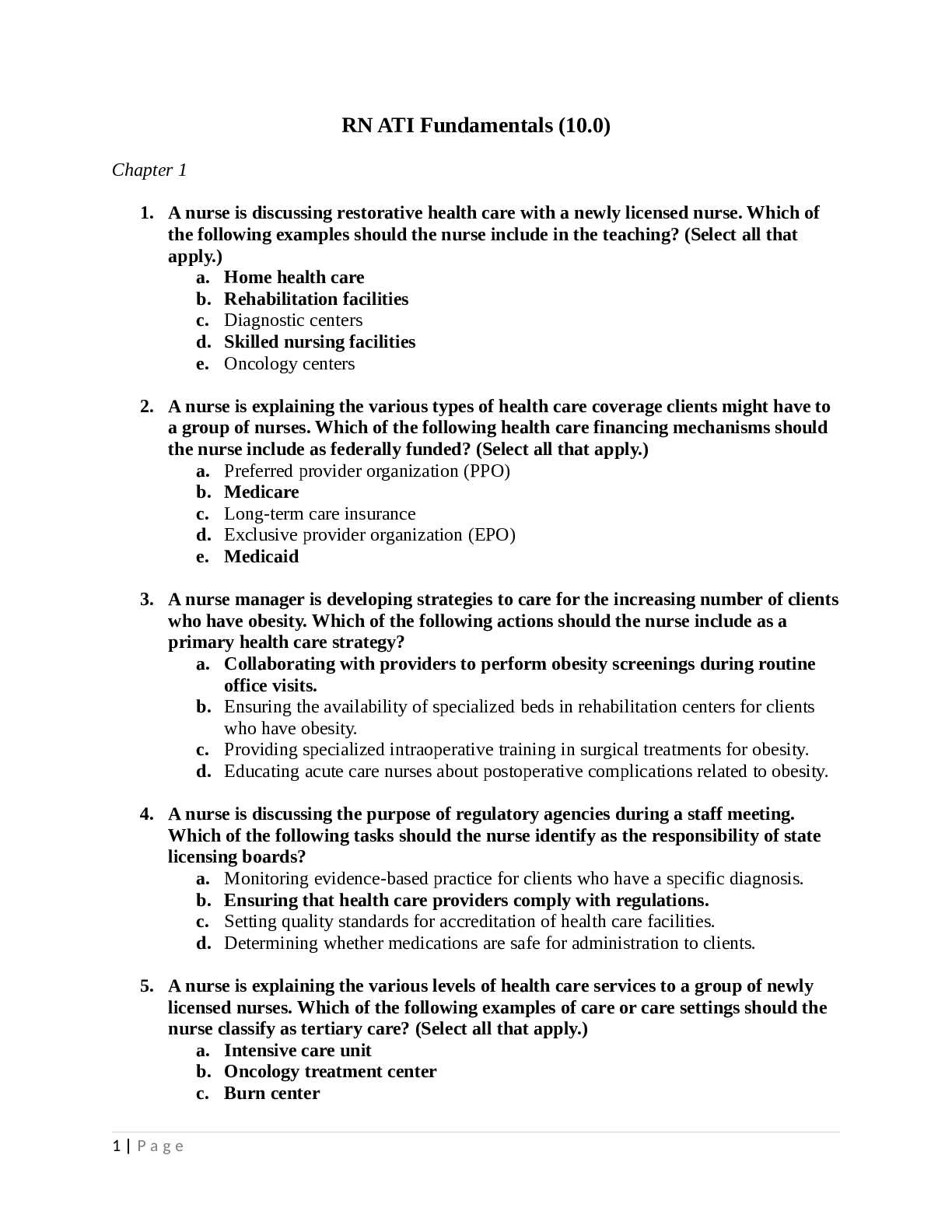
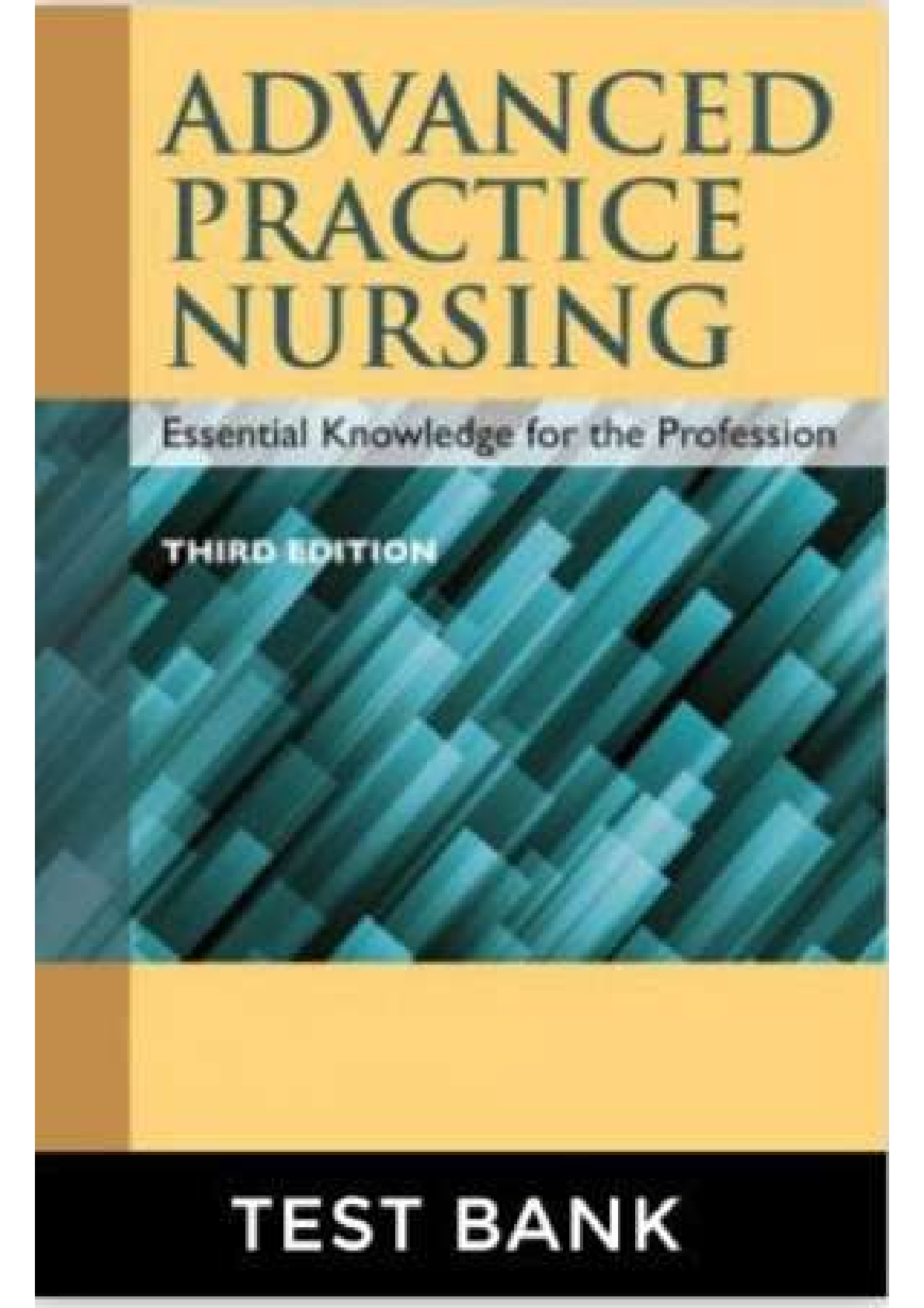
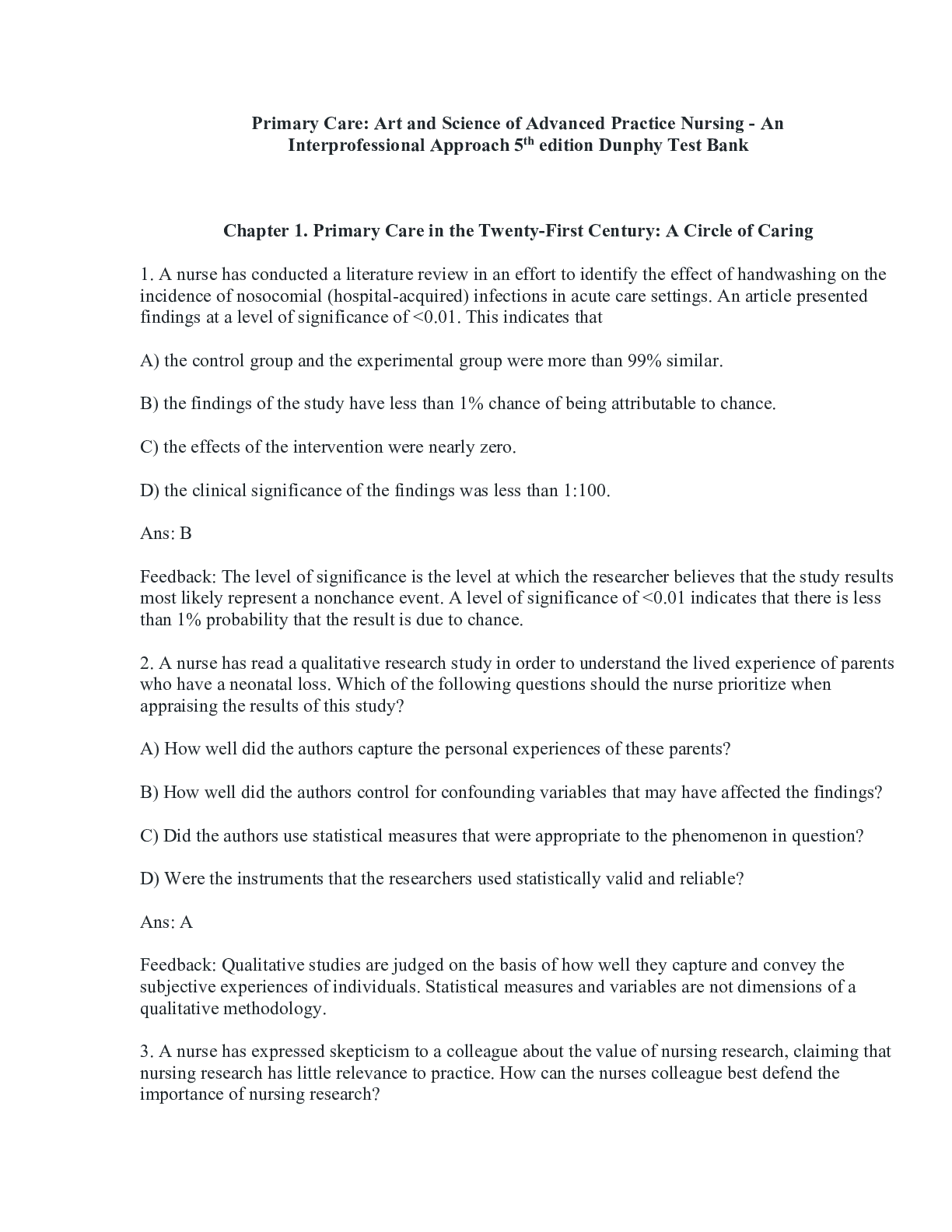
 - libgen.png)
.png)

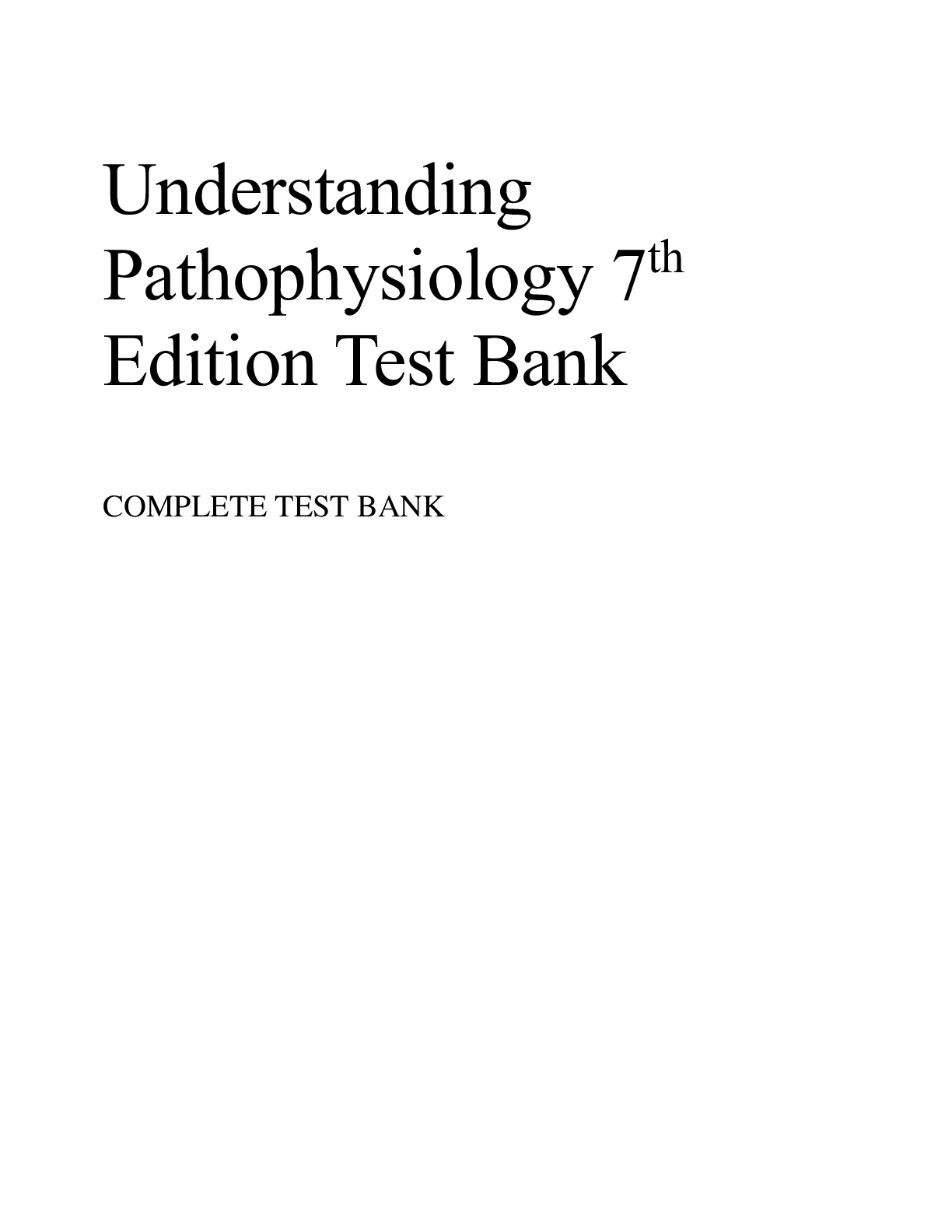
 Mark F.png)
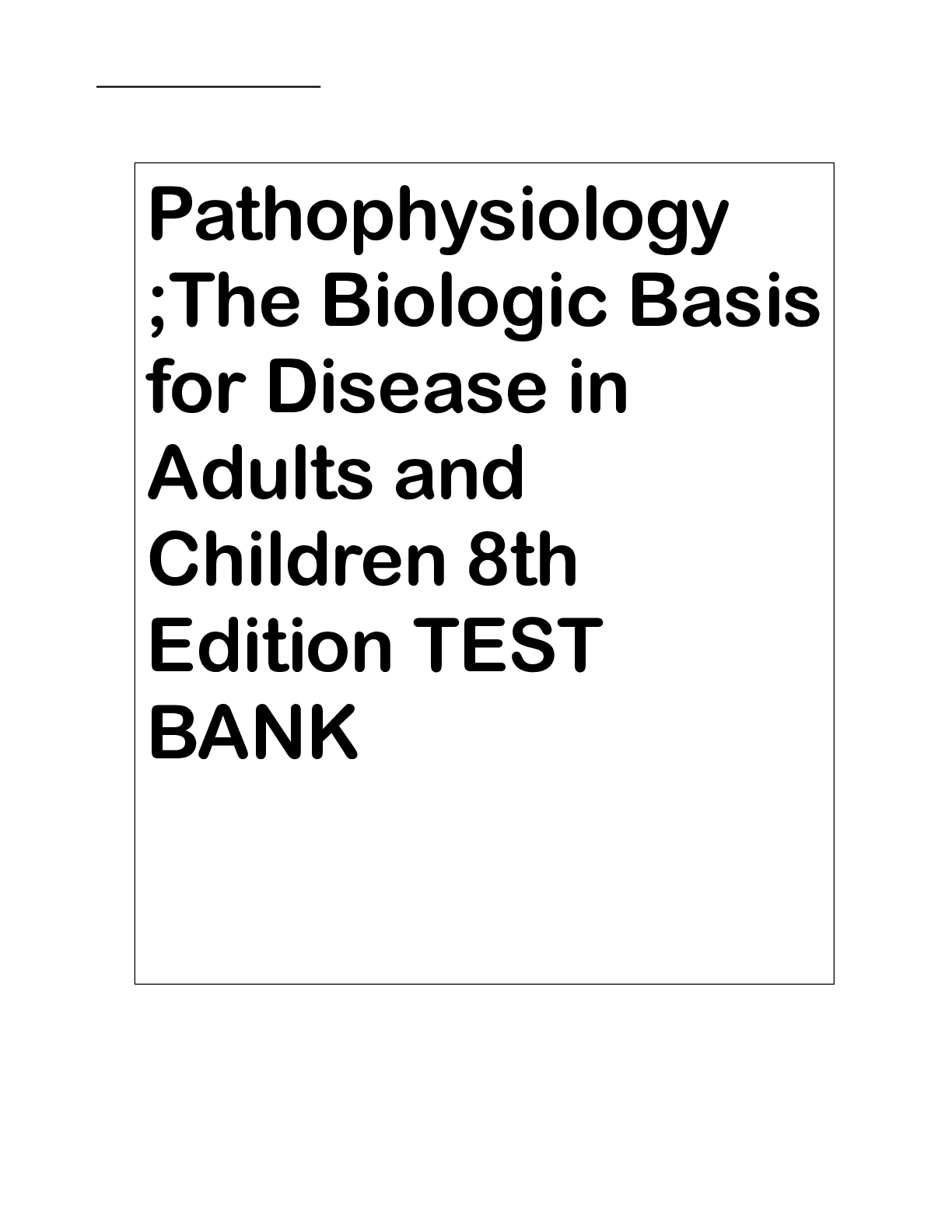
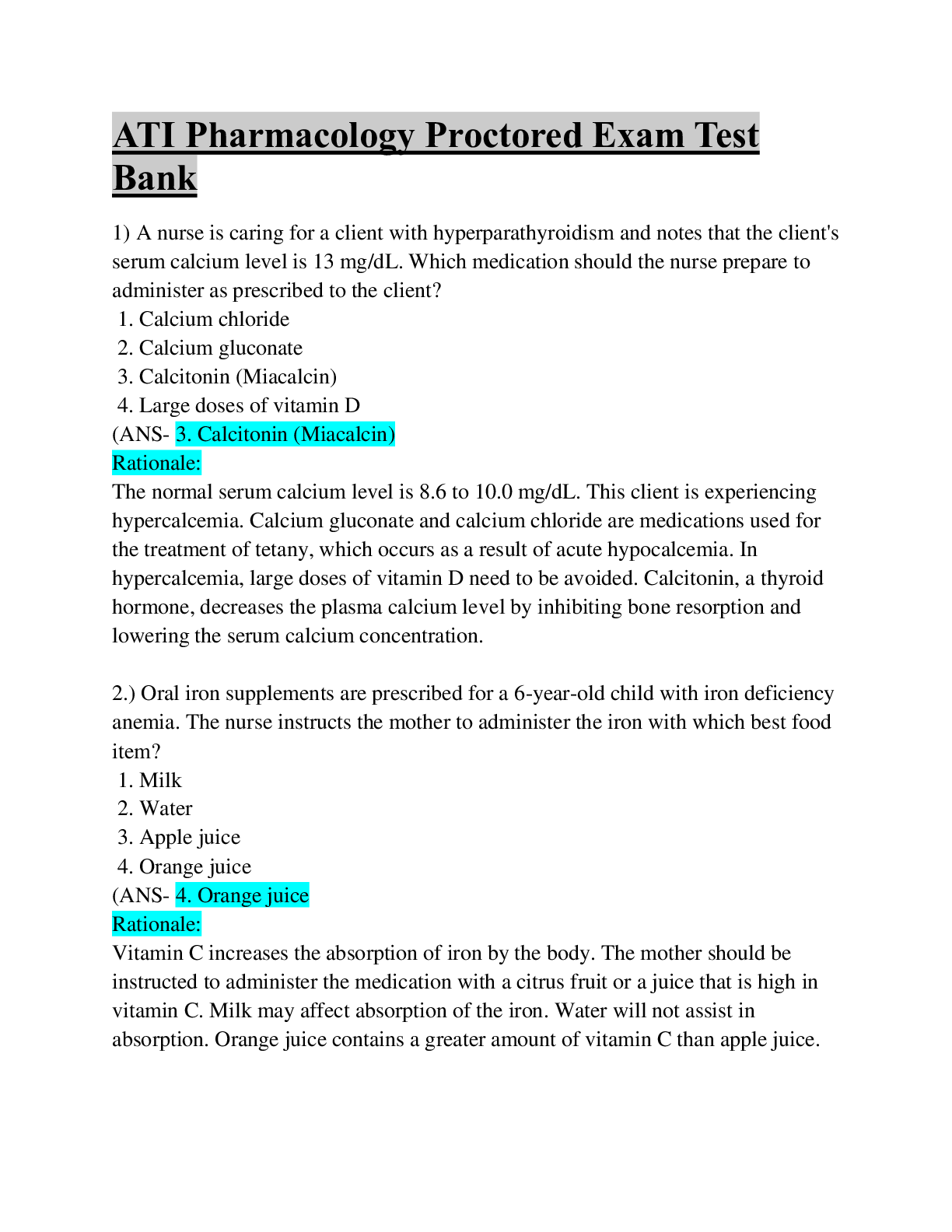

 Securities Institute of America - Wiley series 63 exam review 2016 + test bank_ the uniform securities state law examination-John Wiley and Sons (2016).png)
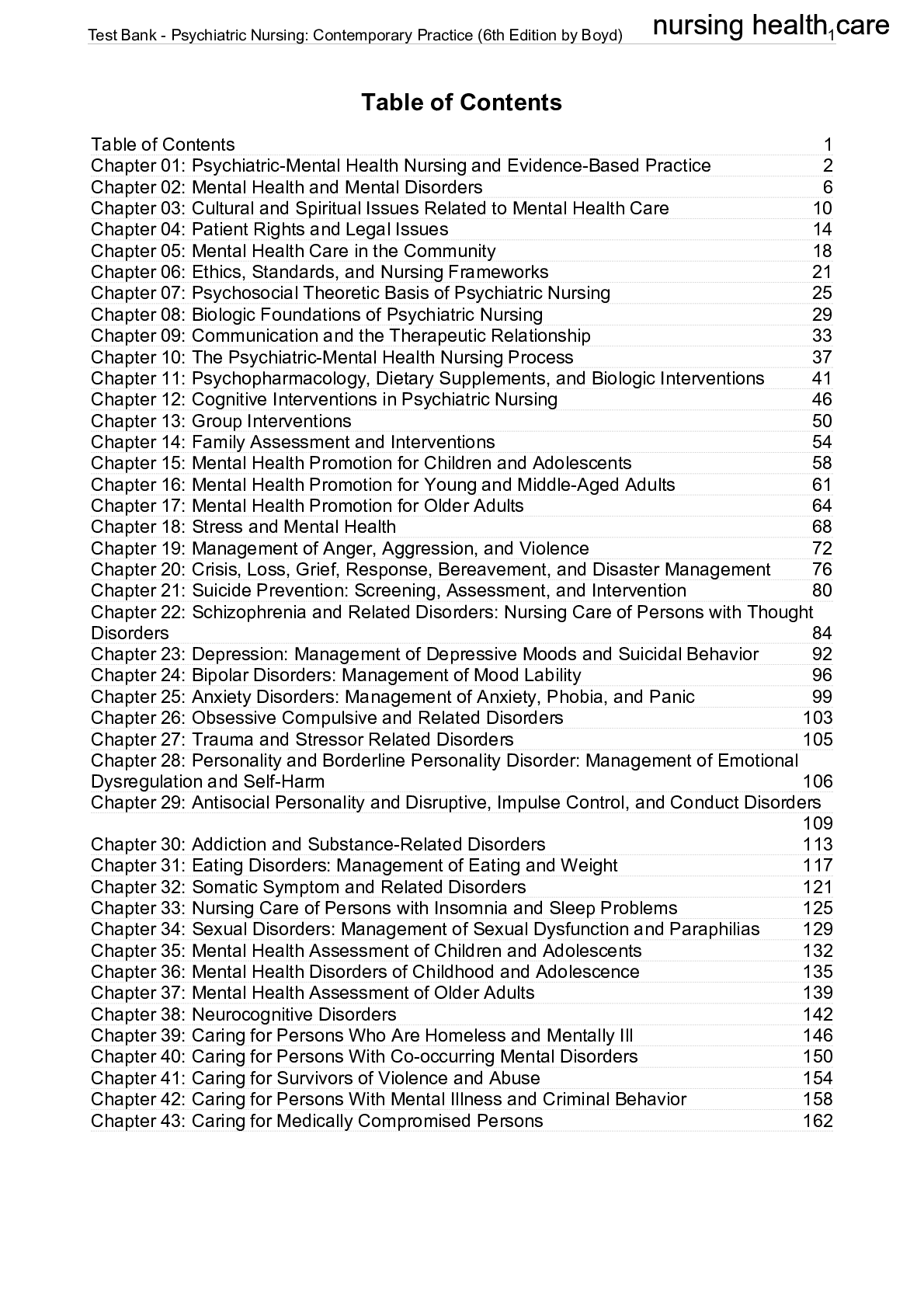
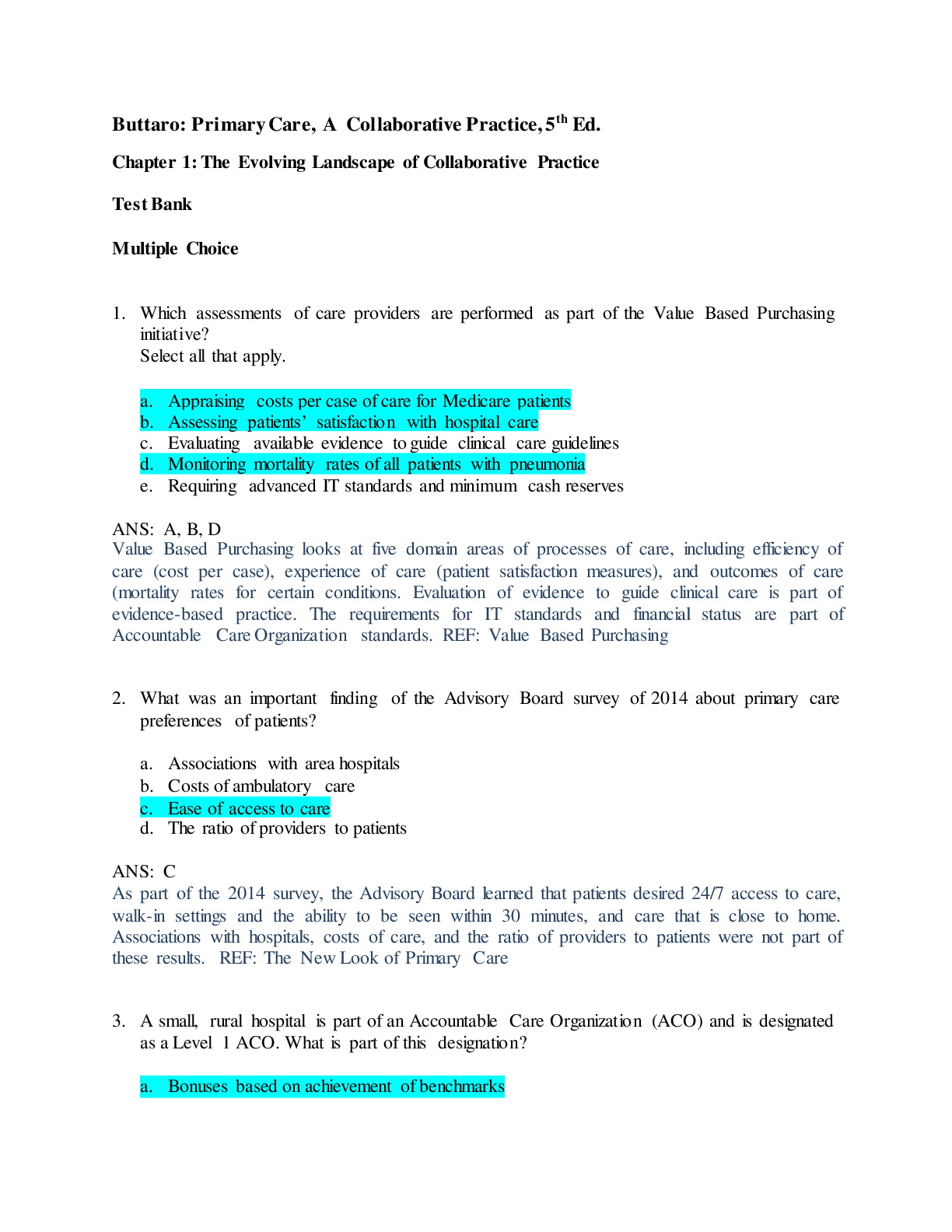

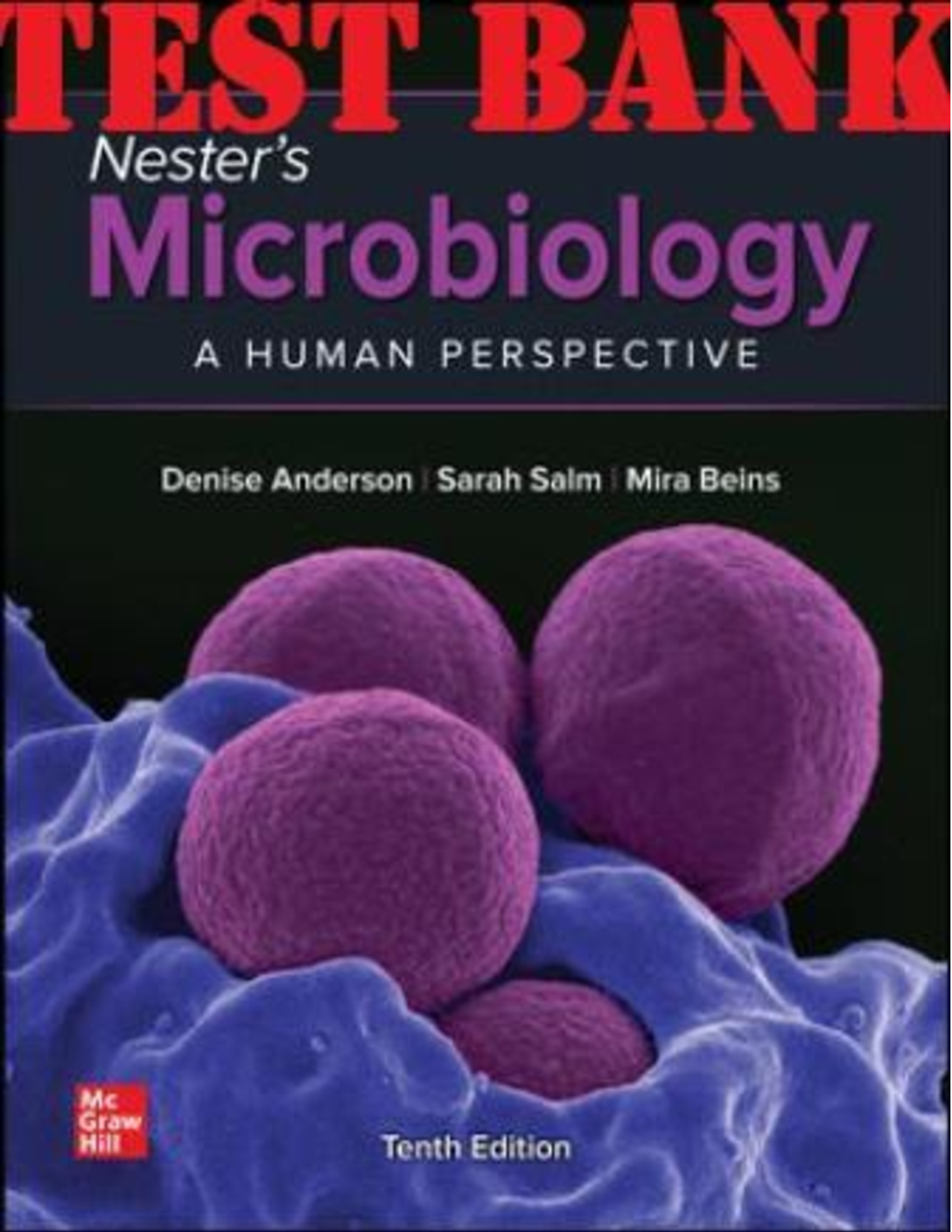
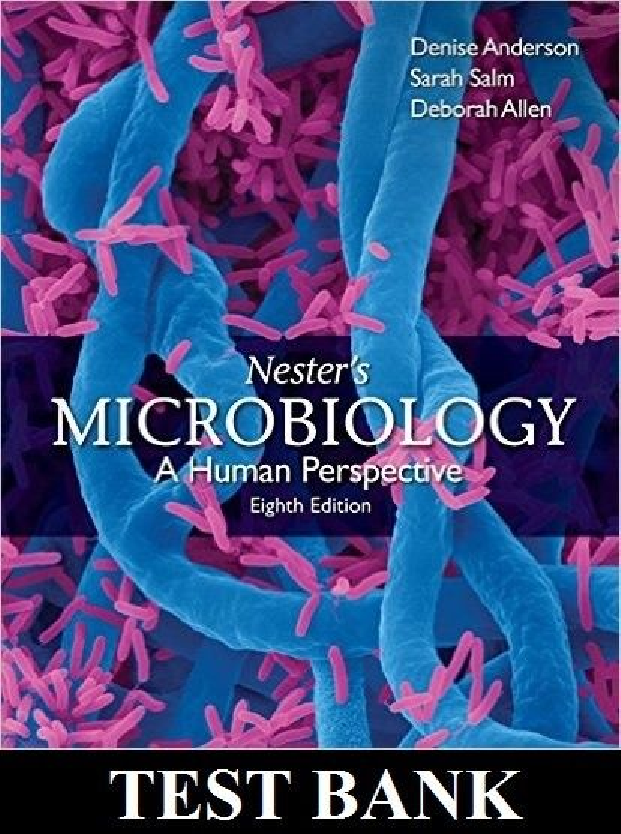

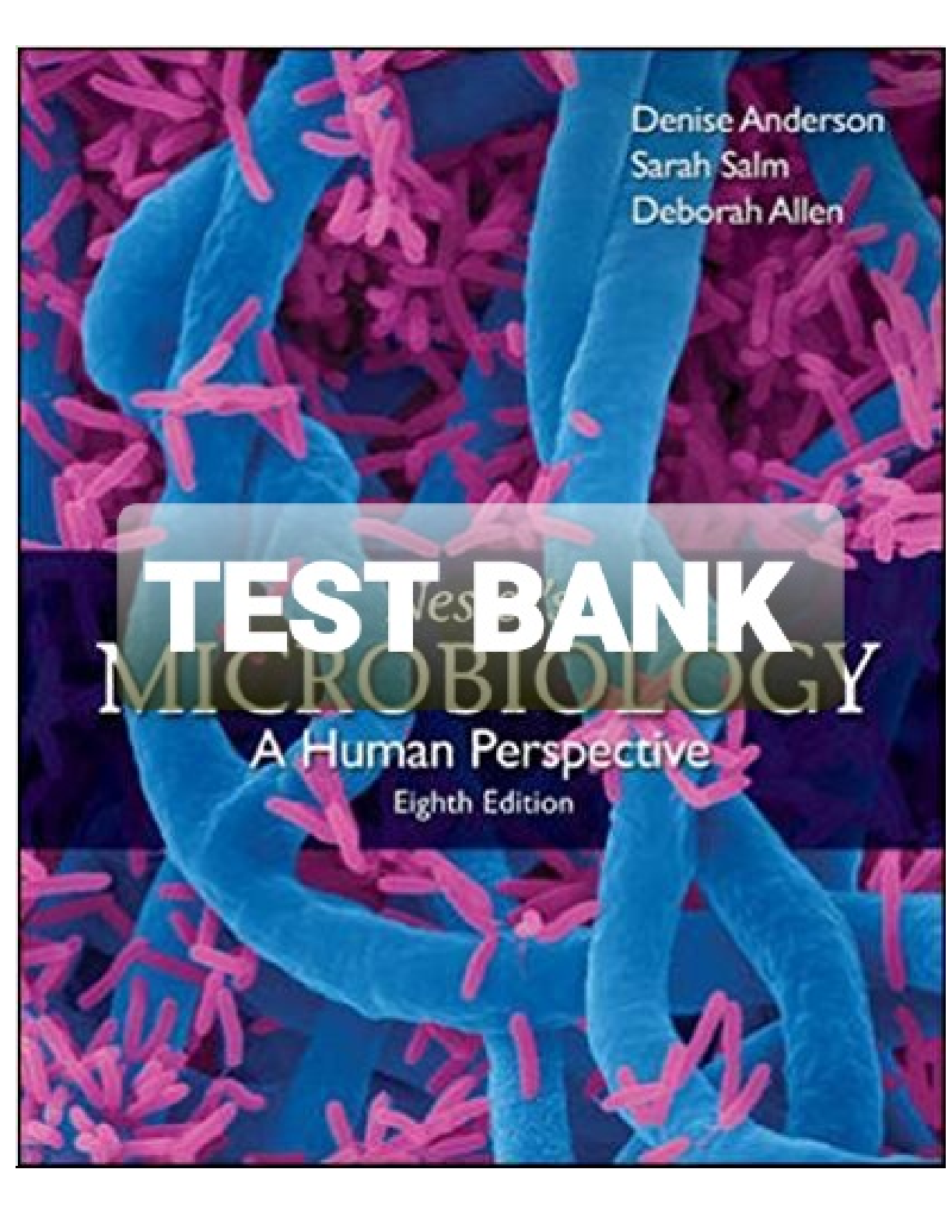
, Sarah Salm (Author), Deborah Allen (Author).png)
